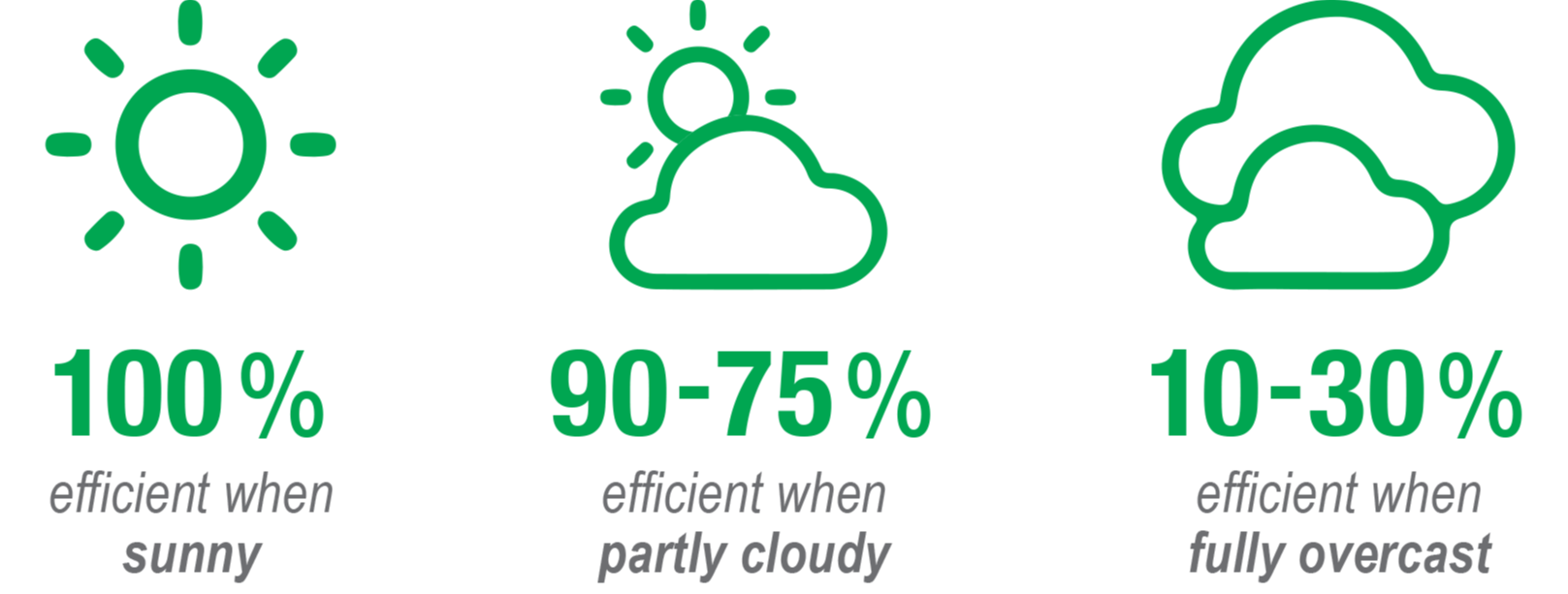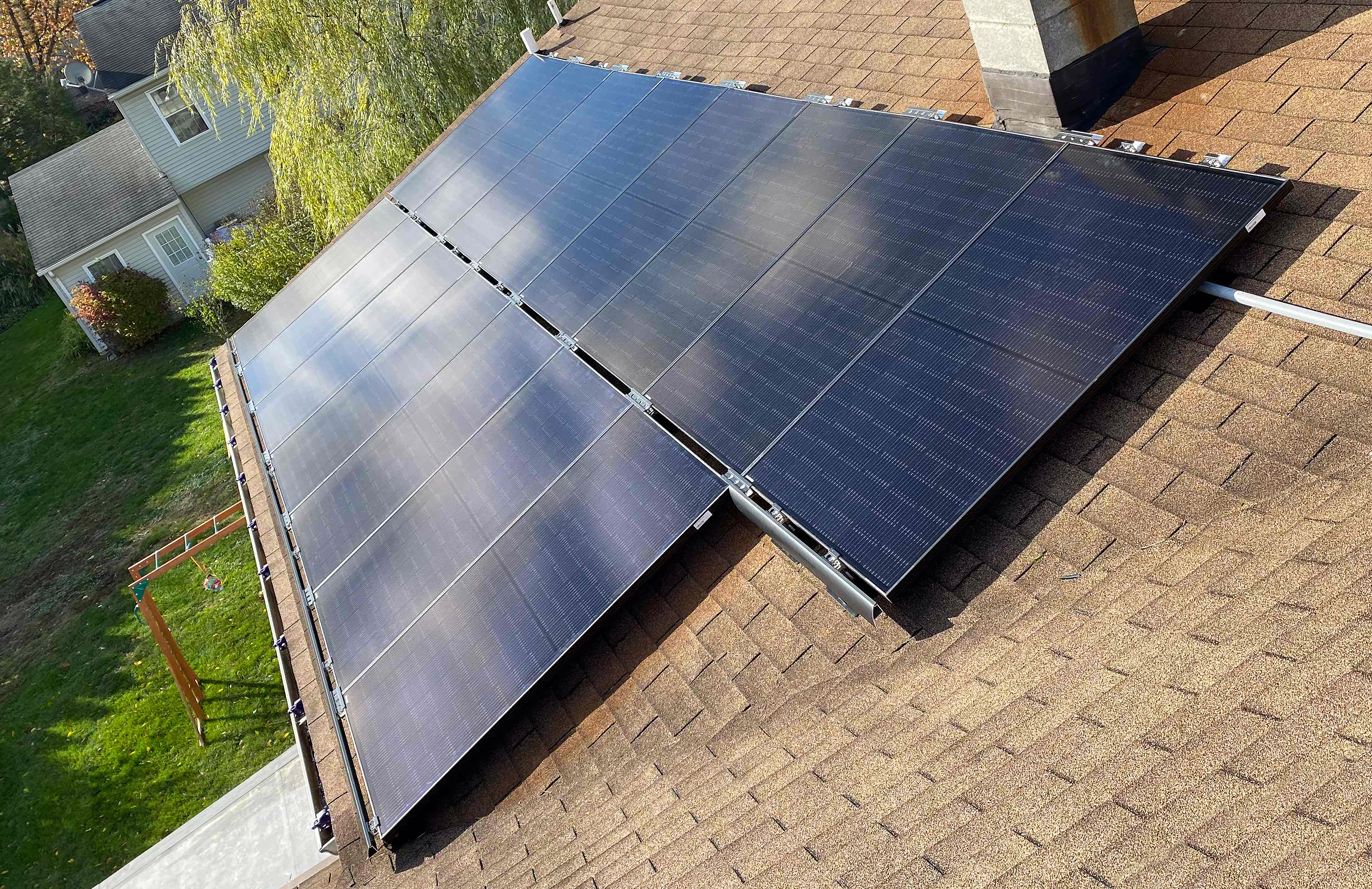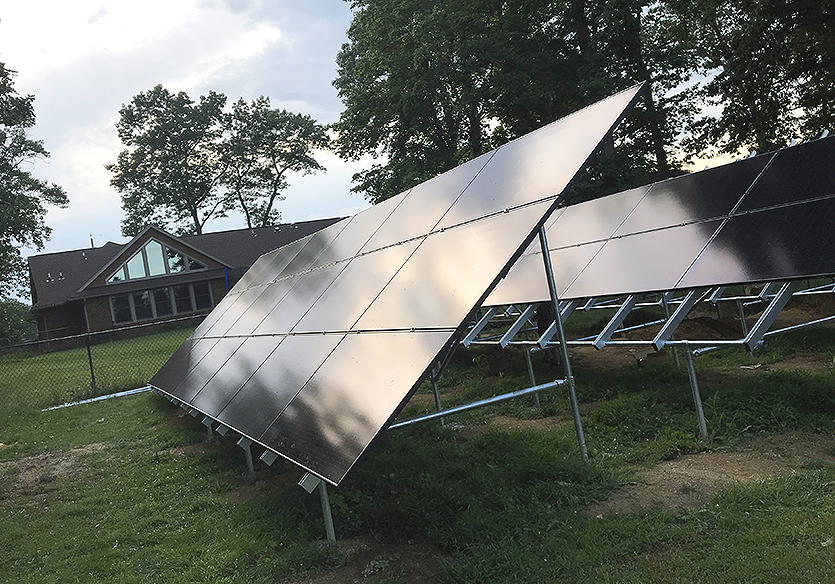Believe it or not, the first method for generating solar power was invented almost 200 years ago. Commercially viable solar panels, on the other hand, only emerged in the last decade. So, it’s no surprise to see a lot of misconceptions about solar energy still floating around.
Today we'll focus on two of the most common myths we encounter.
MYTH #1: Your Panels Won't Produce Energy on Cloudy Days
Many people believe that generating solar energy requires a constant stream of direct sunlight. But, while the first solar cells were pretty much useless on cloudy days, technological advances have made them vastly more efficient today. And part of that increased efficiency comes from the capacity to generate power from indirect sunlight.
Moreover, when the wispy edges of cumulus clouds pass in front of the sun, they can act as a magnifying glass and intensify its rays. That’s called the edge of cloud effect. It means, on partly cloudy days, your solar system will actually be delivering more power at various points.
Despite these factors, however, it’s still true that you’ll be generating much more solar energy when the sun is shining.
 When it’s partly cloudy, you can expect to see a 10% to 25% drop, depending on how often clouds wind up passing between the sun and your panels.
On fully overcast days, you’re likely to see a much larger 70% to 90% drop.
The upshot is that, even with the vast increases in efficiency, most homeowners still won’t be generating enough solar energy to fully power their homes when it’s very cloudy.
Fortunately, however, most will wind up generating surplus energy on sunny days.
There was a time when taking advantage of that extra power required installing an expensive and environmentally unfriendly battery system.
But in Pennsylvania and many other states, something called net metering is now the law of the land. That means your utility company has to compensate you for any extra power your system produces.
And the sunny-day surplus is usually enough to balance out any cloudy-day or nighttime deficits.
When it’s partly cloudy, you can expect to see a 10% to 25% drop, depending on how often clouds wind up passing between the sun and your panels.
On fully overcast days, you’re likely to see a much larger 70% to 90% drop.
The upshot is that, even with the vast increases in efficiency, most homeowners still won’t be generating enough solar energy to fully power their homes when it’s very cloudy.
Fortunately, however, most will wind up generating surplus energy on sunny days.
There was a time when taking advantage of that extra power required installing an expensive and environmentally unfriendly battery system.
But in Pennsylvania and many other states, something called net metering is now the law of the land. That means your utility company has to compensate you for any extra power your system produces.
And the sunny-day surplus is usually enough to balance out any cloudy-day or nighttime deficits.
MYTH #2: Panels are Most Efficient when Mounted on a Roof
The vast majority of the solar systems you see popping up on your drive to work are likely to be roof-mounted. So, it’s natural to assume that mounting panels on a roof somehow increases efficiency. But while there are a lot of good reasons roof-mounted systems are popular, efficiency isn’t one of them. Though everyone has a roof, many homeowners, especially ones in more densely populated areas, simply don’t have enough unobstructed space on the ground to fit a solar system. And many of those who do prefer to keep it available for reaction.

Rooftop installations have other benefits as well, including:
- Because roofs are low access areas, your solar panels will be better-protected.
- Solar panels return the favor by protecting your roof from snow, hail, and other sources of damage.
- Since roofs are high off the ground, sunlight is also less likely to be obstructed by any nearby objects.
 But ground-mounted systems also have advantages of their own, including:
But ground-mounted systems also have advantages of their own, including:
- The technicians doing the installation don’t have to do any climbing or work on a tilted surface. So, ground-mounted systems wind up being significantly less labor-intensive and, hence, a lot cheaper.
- Roofs sometimes need repair or upgrading before panels can be safely mounted, increasing installation costs.
- How much electricity a roof mounted system generates is limited by (i) the size of your roof, (ii) the number of surfaces facing the sun, and (iii) their tilt. Whereas it’s no work at all to set up ground mounts so that every panel is optimally positioned. If you have enough space for a ground-mounted system at all, you’re also almost certain to have enough room for the exact number of panels needed to meet your annual energy needs.